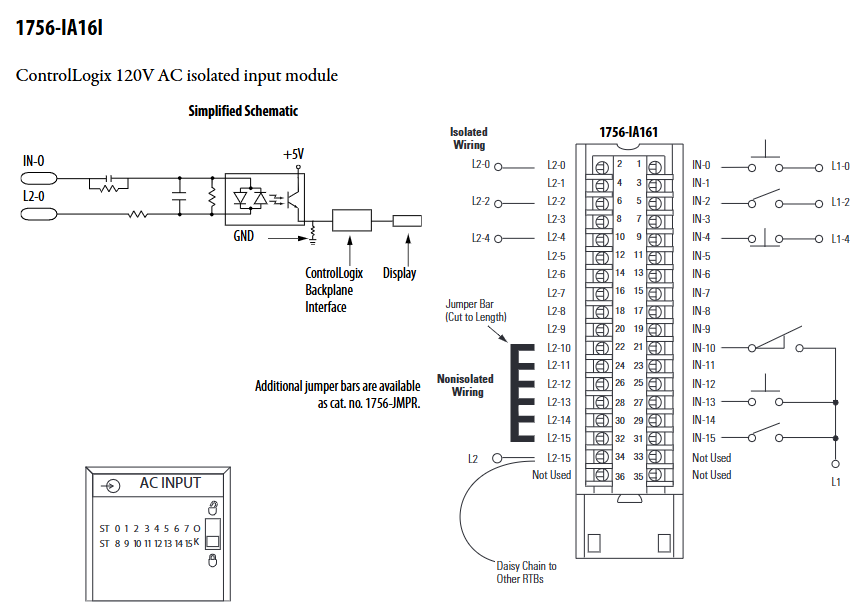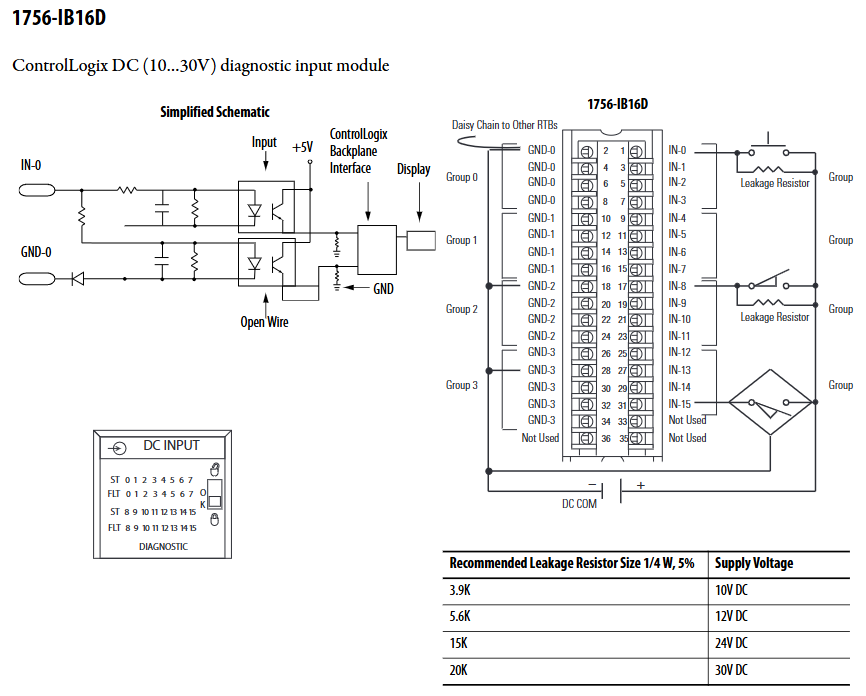Allen Bradley 1756 ControlLogix I/O Specifications Module
Each ControlLogix I/O module mounts in a ControlLogix chassis and requires either a removable terminal block (RTB) or a 1492 interface module (IFM) to connect all field-side wiring. RTBs and IFMs are not included with the I/O modules. They must be ordered separately.
Isolation and protection: The isolation voltage is mostly 250V continuous (basic insulation), and some modules (such as 1756-OB8I) support enhanced isolation. The terminal block supports user-defined mechanical key control to prevent misconnection;
Response time: The input delay of the digital module is 0.2... 10ms (configurable filtering), the sampling time of the analog module is 1ms... 50ms, and the minimum sampling time of the high-speed module (such as 1756-IF4FXOF2F) is 300 μ s.
(2) Environmental and installation requirements
Environmental parameter requirement standards
Working temperature: 0... 60 ℃ (some modules can be extended to -20... 70 ℃, please refer to the specific model)
Relative humidity 5... 95% non condensing (IEC 60068-2-30)
Electromagnetic compatibility (EMC) anti ESD: 6kV contact/8kV air discharge; Anti radiation interference: 10V/m (80... 2000MHz)
Installation method: Rack mounted, single slot width (some special modules occupy 2 slots), supports DIN rail or wall mounted rack

Compliance certification and application scenarios
(1) Global Compliance Certification
All 1756 series modules have passed multi regional safety and electromagnetic compatibility certification, with core certifications including:
North America: UL Listed (UL Document E65584), CSA Certified (Class I Division 2 Hazardous Area);
Europe: CE certification (compliant with EN 61326-1, EN 61000-6-2/4), ATEX certification (II 3 G Ex nA IIC T4 Gc);
Other: FM hazardous area certification, KC Korean radio certification, C-Tick Australian electromagnetic certification.
(2) Typical application industries
Module based high reliability and flexibility, widely used in:
Process industry: petroleum and natural gas, chemical industry, cement (analog quantity+HART module monitoring pressure/flow);
Discrete manufacturing: automobiles, food and beverage (digital quantity module controls motors/valves);
Energy and Transportation: Power Plants, Ships (Temperature Module Monitoring Equipment Temperature, Safety Module Interlocking).
Key selection and usage tips
Model identification: quick judgment function through model suffix, such as "D"=diagnosis, "E"=electronic fuse, "I"=isolation “H”=HART;
Terminal block selection: Select RTB based on the number of module channels and wiring requirements. For example, 1756-TBCH is suitable for multi-channel isolation modules, while 1756-TBNH is suitable for ordinary digital modules;
Calibration cycle: It is recommended to calibrate the analog and temperature modules every 6-12 months to ensure accuracy;
Dangerous area use: For Class I Division 2 areas, modules with corresponding certifications (such as CSA LR69960C, FM certification) should be selected to avoid direct use of non certified modules.

- EMERSON
- Honeywell
- CTI
- Rolls-Royce
- General Electric
- Woodward
- Yaskawa
- xYCOM
- Motorola
- Siemens
- Rockwell
- ABB
- B&R
- HIMA
- Construction site
- electricity
- Automobile market
- PLC
- DCS
- Motor drivers
- VSD
- Implications
- cement
- CO2
- CEM
- methane
- Artificial intelligence
- Titanic
- Solar energy
- Hydrogen fuel cell
- Hydrogen and fuel cells
- Hydrogen and oxygen fuel cells
- tyre
- Chemical fiber
- dynamo
- corpuscle
- Pulp and paper
- printing
- fossil
- FANUC
- Food and beverage
- Life science
- Sewage treatment
- Personal care
- electricity
- boats
- infrastructure
- Automobile industry
- metallurgy
- Nuclear power generation
- Geothermal power generation
- Water and wastewater
- Infrastructure construction
- Mine hazard
- steel
- papermaking
- Natural gas industry
- Infrastructure construction
- Power and energy
- Rubber and plastic
- Renewable energy
- pharmacy
- mining
- Plastic industry
- Schneider
- Kongsberg
- NI
- Wind energy
- International petroleum
- International new energy network
- gas
- WATLOW
- ProSoft
- SEW
- wind
- ADVANCED
- Reliance
- YOKOGAWA
- TRICONEX
- FOXBORO
- METSO
- MAN
- Advantest
- ADVANCED
- ALSTOM
- Control Wave
- AB
- AMAT
- STUDER
- KONGSBERG
- MOTOROLA
- DANAHER MOTION
- Bently
- Galil
- EATON
- MOLEX
- Triconex
- DEIF
- B&W
- ZYGO
- Aerotech
- DANFOSS
- KOLLMORGEN
- Beijer
- Endress+Hauser
- MOOG
- KB
- Moxa
- Rexroth
- YAMAHA
- Johnson
- Westinghouse
- WAGO
- TOSHIBA
- TEKTRONIX


Email:wang@kongjiangauto.com



































































































































